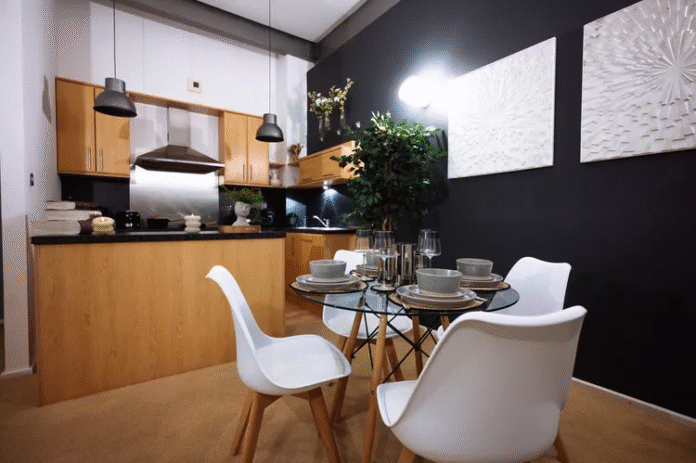
In a world where glossy perfection and airbrushed norms still dominate advertising, Kiehl’s has taken an unexpected—and let’s be honest, delightfully provocative—turn in the name of body positivity. The venerable skincare brand has launched a new typeface that’s raising eyebrows and shifting mindsets: Pubic Display Type.
Yes, it’s exactly what it sounds like. A font crafted from actual human pubic hair.
It’s not a prank. It’s not a publicity stunt (well, not just a publicity stunt). It’s a direct and unapologetic response to censorship, body shame, and the sanitized expectations placed on how we depict the human body—especially the parts we’re trained to keep hidden.
From Censorship to Statement
The story behind this unconventional design choice is almost as bold as the font itself. In 2024, Kiehl’s released an ad promoting its intimate care line, featuring models with visible pubic hair. The message was simple: this is natural, and it deserves visibility just like any other part of our body. But the ad met resistance—censored for its supposed indecency. The models, or more precisely, their hair, had crossed some unwritten line of public comfort.
So, Kiehl’s got clever. Rather than retreating, they leaned in—hard. Their solution? Eliminate the models, keep the hair, and reframe the conversation. Enter Pubic Display Type.
Three striking campaign visuals followed, their headlines spelled entirely using the new font:
- “Our photos of models with pubic hair were censored, so we removed the models.”
- “Pubic hair don’t care.”
- “Apologies, we won’t show pubic hair ever again.”
The sarcasm is sharp. The message is clear. And the execution? Irreverently brilliant.
Typography as Protest
We’re used to fonts that embody elegance (Baskerville), authority (Times New Roman), or minimalism (Helvetica). But Pubic Display Type brings something rarely seen in type design: vulnerability. It’s organic, tactile, even intimate—and that’s precisely the point.
Each letter, constructed from strands of real pubic hair, is designed not just to grab attention, but to confront long-standing discomfort around the human body. In an era where digital manipulation allows us to perfect every pixel, Kiehl’s has introduced a typeface that’s messy, raw, and defiantly human.
It’s typography as protest. A creative tool to question why society still treats natural body features as shameful.
The Body Isn’t the Problem
At the heart of this campaign is a deeper challenge to beauty standards. Why is body hair still controversial? Why do we flinch at something all humans have? These questions drive Kiehl’s latest initiative, and as Global Brand President Jon Sáenz put it:
“Pubic hair is a natural part of the human body, and there is no reason to feel uncomfortable with it. We believe in providing solutions for all skincare needs, without exception.”
By turning censorship into conversation, the brand has demonstrated not only its irreverent creative chops, but a real willingness to use its platform to advocate for inclusive, honest self-care.
And let’s be real: the campaign could have easily gone wrong. It toes the line between cheeky and shocking. But Kiehl’s executes with a kind of knowing wink—a blend of wit, purpose, and design that feels both grounded and subversive.
Body Positivity—In Bold and Italic
Pubic Display Type isn’t about sensationalism. It’s about visibility. It reminds us that self-love isn’t limited to manicured hands and glowing cheeks. It includes the parts we’re told to wax, shave, or hide. It includes all of us.
The font itself—rounded, playful, almost whimsical—echoes this message. It softens the shock factor while still challenging viewers to confront their biases. It’s not aggressive; it’s inviting. And that’s perhaps its greatest strength.
This campaign doesn’t shout. It smirks.
What Happens Next? Typefaces for Every Body?
Kiehl’s has opened the door to an unexpected design frontier: fonts made not just for the body, but from it. What might follow? “Underarm Sans”? “Stretchmark Script”? “Bellybutton Bold”?
The point isn’t novelty—it’s normalization. If beauty is truly about authenticity, then design should reflect that same ethos. Maybe one day, body-based fonts won’t be considered radical at all. Maybe they’ll just be… fonts.
Until then, Pubic Display Type has secured its place as a memorable moment in both branding and cultural commentary.
Final Thoughts: Hair Today, Heard Tomorrow
By transforming a censored ad into a provocative artistic statement, Kiehl’s hasn’t just marketed a product—they’ve sparked a conversation. One that goes beyond skincare and into the realm of self-image, gender norms, and societal expectations.
We didn’t know we needed a font made from pubic hair. But maybe we did.
Maybe what we need more of are brands willing to talk about the things we’re still whispering about. Willing to get a little messy. Willing to laugh and still make a point.
With Pubic Display Type, Kiehl’s has managed to say what words alone couldn’t. And they’ve done it one curly letter at a time.











